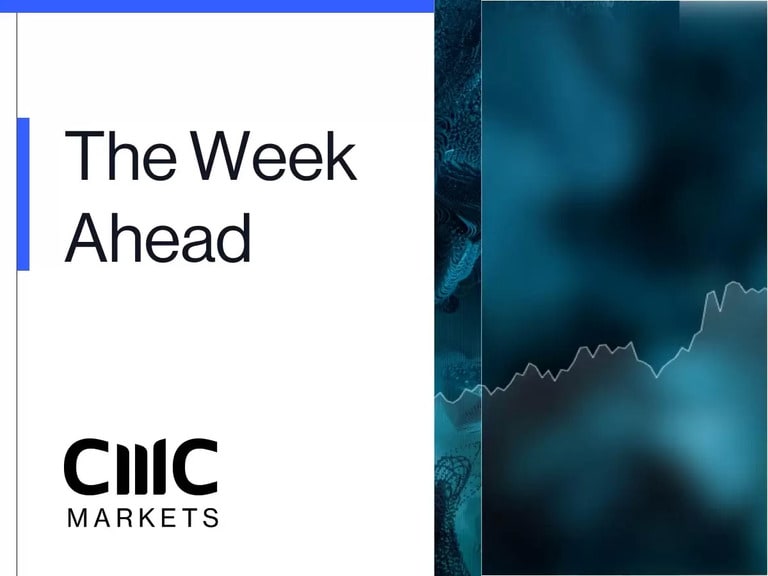Darren Sinden from educational provider Trade Uni discusses the latest market moves.
Yesterday, the S&P 500 closed down by 0.02%, the Dow Jones by 0.37%, and the Nasdaq 100 by 0.08%. Stock indices settled mixed, with the Dow posting a new record high. Thursday's recovery in chip stocks lifted the broader market after Taiwan Semiconductor Manufacturing, the main chipmaker for Nvidia and Apple, eased chip demand concerns when it reported a better-than-expected 54% increase in Q3 net income and raised its target for 2024 revenue growth. Weakness in health insurance stocks knocked the S&P 500 down from a record high as Elevance Health tumbled more than 10% after reporting weaker-than-expected Q3 adjusted earnings per share (EPS) and cutting its full-year adjusted EPS forecast.
Stronger-than-expected US economic news on weekly jobless claims and September retail sales supported stocks, bolstered confidence in the US economy and improved the outlook for a soft landing. US weekly initial unemployment claims unexpectedly fell by 19,000 to 241,000, showing a stronger labour market than expectations of an increase to 259,000. US September retail sales rose 0.4% month-on-month, stronger than expectations of 0.3%. Also, September retail sales ex-autos rose 0.5% month-on-month, stronger than expectations of 0.1% month-on-month.
The Philadelphia Federal Reserve’s manufacturing index rose to 10.3 in October from 1.7 the previous month, stronger than expectations of a rise to 3.0. US September manufacturing production fell 0.4% month-on-month, weaker than expectations of 0.1%. The National Association of Home Builders’ housing market index rose to 43 in October from 41 in September, beating expectations of a rise to 42. T-note yields moved higher and weighed on stocks following yesterday’s US economic news, reinforcing the case for a less dovish stance from the Fed.
The results of corporate Q3 earnings may determine the near-term direction of stocks. According to Bloomberg Intelligence, companies in the S&P 500 are expected to report an average 4.3% increase in quarterly earnings in Q3 from a year ago, down from 7.9% growth projected in July. Markets are discounting the chances at 89% for a 25-basis-point rate cut at November’s Federal Open Market Committee meeting and at 0% for a 50-point cut.
Overseas stock markets also settled mixed yesterday. The Euro Stoxx 50 closed up by 0.79%, China's Shanghai Composite dropped by 1.05% and Japan's Nikkei 225 fell to a one-week low and closed down by 0.69%. China is the centre of attention today, following a barrage of data and remarks from its central bank chief, financial regulator and stats bureau. Unfortunately, none of it painted a clearer picture of how the world's second-largest economy is positioned and what policymakers are doing about it. The economy grew at the slowest pace since early 2023 in the third quarter, although forecast-topping retail sales potentially gave some cause for optimism. However, new home prices tanked at the fastest pace since 2015.
Yesterday the European Central Bank’s (ECB) governing council lowered the interest rates on the deposit facility, main refinancing operations and marginal lending facility to 3.25%, 3.4% and 3.65%, respectively. The council cited its new assessment of the inflation outlook, the dynamics of underlying inflation and the intensity of monetary policy transmission for its decision. The council also said it is not committing to a particular rate path, reiterating that future decisions will abide by a data-dependent and meeting-by-meeting approach but maintaining that it is prepared to adjust when necessary.
"In view of falling inflation and a weak economy, especially in Germany but also in the eurozone as a whole, the lowering of the key interest rate by the ECB is well justified. Nevertheless, there are also upside risks to inflation, particularly for service providers. It is therefore right to not commit to further interest rate cuts," Ifo president Clemens Fuest said in a note. Meanwhile, Eurostat data showed that the annual inflation rate in the eurozone eased to 1.7% in September, compared with 2.2% in August. Core inflation also slowed to 2.7% from 2.8%.
The euro floated mostly sideways early Friday after an event yesterday knocked the bullishness out of traders. EUR/USD tumbled to a three-month low of $1.081 but pared back some of its losses this morning to exchange at around $1.084. The bearish mood was caused by the ECB’s third cut to interest rates this year. The euro has seen better days; over the past fourteen trading sessions, it has had just two days in the green and has lost over 3.3% of its valuation.
The dollar is headed for its third weekly gain in a row today, helped by a dovish ECB and strong US data that is pushing out expectations for how fast US rates can fall. In Asia, a slew of economic data from China, including third-quarter growth figures, was met with a muted response from markets, though subsequent comments from the country's central bank providing further details of Beijing's stimulus measures helped lift Chinese assets broadly. AUD/USD, often used as a liquid proxy for the Chinese yuan, was last up 0.12% at $0.6704. USD/CNY ticked 0.06% higher to ¥7.1193, while its offshore counterpart USD/CNH rose 0.1% to ¥7.1307.
Crude oil futures steadied today after strong US retail sales data, but Chinese economic indicators remained mixed and prices headed for their biggest weekly loss in more than a month on concerns about demand. Brent crude futures gained 0.1% to $74.53 a barrel by 4.38am (UK time) while WTI crude was at $70.82 a barrel, up 0.2%. Both contracts settled higher on Thursday for the first time in five sessions after data from the Energy Information Administration showed that US crude oil, gasoline and distillate inventories fell last week. Brent and WTI are set to fall about 6% this week, their biggest weekly decline since 2 September, after OPEC and the International Energy Agency cut their forecasts for global oil demand in 2024 and 2025 and concerns eased about a potential retaliatory attack by Israel on Iran that could disrupt Tehran's oil exports.
Unlike oil, gold is still pushing higher, passing $2,700 per ounce to reach a new record high, driven by global demand for safe-haven assets and expectations of further interest rate cuts from major central banks. Bullion prices increased as investors shifted away from riskier assets due to underwhelming fiscal measures in China for the ongoing property crisis and uncertainties surrounding the US presidential election. Still, strong economic data from the US limited gold's upward momentum.
Disclaimer: CMC Markets Singapore may provide or make available research analysis or reports prepared or issued by entities within the CMC Markets group of companies, located and regulated under the laws in a foreign jurisdictions, in accordance with regulation 32C of the Financial Advisers Regulations. Where such information is issued or promulgated to a person who is not an accredited investor, expert investor or institutional investor, CMC Markets Singapore accepts legal responsibility for the contents of the analysis or report, to the extent required by law. Recipients of such information who are resident in Singapore may contact CMC Markets Singapore on 1800 559 6000 for any matters arising from or in connection with the information.








